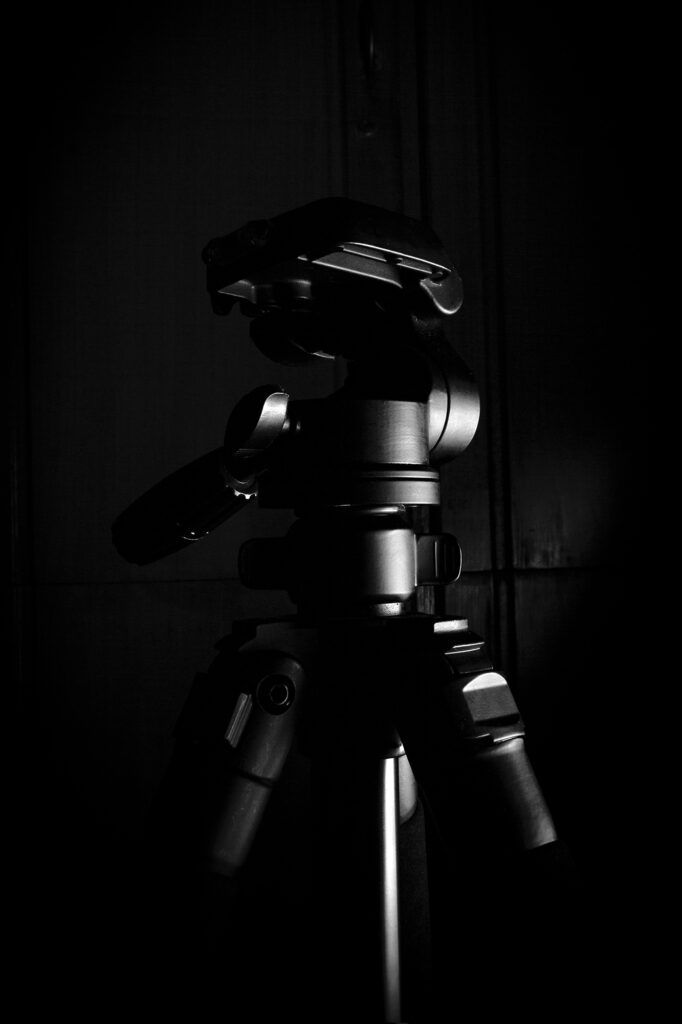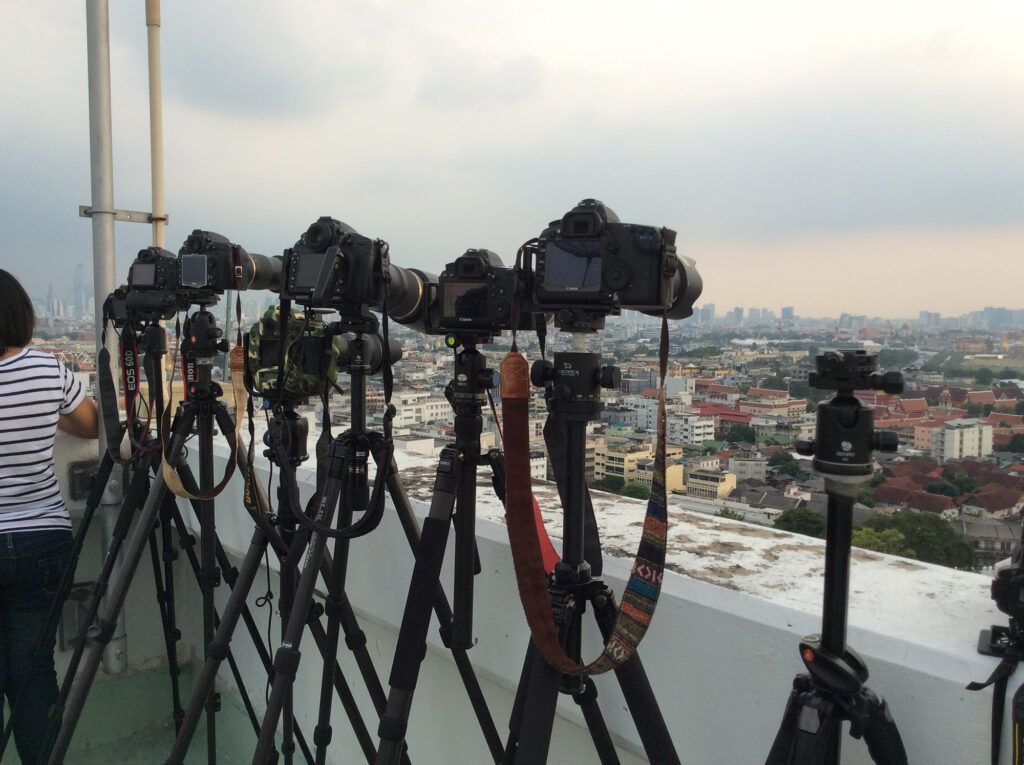The short answer to this question is no – all tripods are most definitely not the same! Whilst a tripod may seem like a simple tool designed to keep cameras steady, there are a huge variety of models on the market. In this guide, I’m going to look at all aspects of tripods so you can make an informed decision on what will suit you best.
Here’s what we’ll cover:
- Advantages and disadvantages of using a tripod
- What factors make tripods different?
- Which tripod should you buy, depending on your budget?
Recommended Reading: Want to expand your shooting skills and master photography? Grab our set of 65 beautifully designed and printable Action Cards that will give you over 200 photography assignments to help you take your photography to the next level. Check it out here.
Advantages and Disadvantages of Using a Tripod
Before we start looking at the ins and outs of choosing a tripod, let’s just run down the reasons why you need a tripod (and a few disadvantages to using one).
Advantages:
- To use slow shutter speeds without causing camera shake
- To shoot a series of photos that require exactly the same composition (e.g., HDR)
- To rest heavy camera gear such as long telephoto lenses on
- To allow the use of low ISOs to avoid noise
- To photograph at night
- To use creative techniques such as light painting
- To shoot at difficult angles
- To shoot vibration-free videos
- To hold other items, such as flashguns or reflectors

A good, sturdy tripod is essential to protect your camera equipment. Photograph by Usman Yousaf
Disadvantages:
- They can be expensive
- They take time to set up, meaning you could miss the shot
- They can be heavy and unwieldy
- They are inconvenient and take up space
- A flimsy tripod could damage your camera and lens if it falls over
What Factors Make Tripods Different?
Several factors differentiate tripods, which you should consider when choosing the right tripod for your needs. Let’s look at these now:
Carrying Weight
The most important thing to consider with a tripod is how much weight it can support. If you buy a tripod that can only support a few pounds and then place a heavy tripod on it, it’s fairly obvious what’s going to happen. The resulting collapse is likely to be an expensive mistake.
Key Lesson: Always make sure that the tripod you buy can support at least 1.5 times more than the total weight of your camera and lens. Two times more is even better! This gives you the scope to add in extra elements, such as a flashgun or battery grip.
Construction and Tripod Weight
The weight of your tripod is another major consideration. One of the reasons people end up with an unstable tripod is that they look for something lightweight and easy to carry. But a lightweight, flimsy tripod made of cheap plastics isn’t going to support anything.
The lightest high-quality tripods are made from carbon fiber, which is extremely durable, stable, and doesn’t rust. However, these tripods come with a high price tag. A more popular material for the vast majority of tripods is aluminum. This is another sturdy and durable material, but it is heavier than carbon fiber. Typically, aluminum legs weigh around 5 to 6 pounds and are heavier, whereas carbon fiber legs weigh between 3 and 4 pounds.
Do bear in mind that you’ll also add more weight with a tripod head (more on the different types of the head later).
Height
Ideally, you’ll want a tripod that matches your height so that you don’t need to keep bending over to look through your camera’s viewfinder. Of course, this could be a problem if you are particularly tall or want a tripod that’s smaller and portable. As a general rule, look for a tripod where the tip of the tripod head is on your jawline. For a modular tripod with a separate head, make sure the legs end at approximately your shoulder level.

Tripods come in an array of different sizes and sturdiness! Photograph by Sippakorn Yamkasikorn
Stability
Plenty of heavy-duty tripods on the market lack the stability needed to cope with differing weather conditions (as well as plenty of flimsy tripods!). You want to be looking for a tripod that will stay stable in windy conditions but won’t be phased by an accidental bump or knock.
Legs
Tripod legs are usually divided into three to five sections, with either a threaded twist-lock system or a flip lock to extend it. The more sections a tripod has, the higher it will be, but this often leads to less stability. Most pro-standard tripods only have three sections.
Feet
Most tripods come with standard rubber feet, but some higher-end models allow you to replace the feet for different conditions. So, you might find tripod feet for indoors, made from rubber or plastic, and ones for outdoors in the shape of metal spikes. These feet just unscrew on the bottom of the tripod legs.
Central Post
A lot of tripods come with a central post, which is a single extendable leg in the middle of the tripod. At its most basic, this column allows you to extend the height of your tripod further. However, it’s unlikely to be very stable and may well cause vibration. On some columns, the central post is removable and can be used sideways or to convert the tripod to a low level.
Head
The tripod head is responsible for holding your camera equipment in place securely, so you must get one that’s sturdy enough for the task. If you are using a modular system where the head is purchased separately from the legs, make sure that it can support at least the same amount of weight as the legs can.
The tripod head is responsible for holding your camera equipment in place securely, so you must get one that’s sturdy enough for the task.
There are several different tripod heads available, with these being the most common:
- Pan-Tilt Head – These heads come with either a single handle for horizontal movement or dual handles for both horizontal and vertical movement. These heads are the ones you’ll typically find built into cheaper tripods.
- Ball Head – These simple heads have one control that tightens or loosens the grip. They are extremely flexible and allow for smooth operation and rotation whilst keeping cameras securely attached.
- Gimbal Head – These specialized heads are designed for long and heavy telephoto lenses. They are designed to balance the camera and lens and are often used for action photography.
Quick Release Plate
Turn your camera over and you’ll find a thread on the bottom that allows you to attach it to a tripod or monopod. Larger telephoto lenses will also come with a tripod cover with the same thread attached. To make it easier to attach cameras to tripods, manufacturers make tripod heads with quick-release plates. This is a small removable plate that you can unclip from the tripod head and quickly screw into the base of your camera. Cheap tripods often come with a plastic plate, which is somewhat flimsy. You will want to invest in a tripod with an Arca-Swiss Quick Release System. These plates are made from strong aluminum and can be permanently attached to a camera or lens. The plate then slides into a quick-release clamp with a simple locking mechanism.

This nighttime shot is a classic example of when using a tripod is absolutely vital for capturing the image. Photograph by Daniel Olah
Which Tripod Should You Buy, Depending on Your Budget?
Unfortunately, as with many things in the photographic world, you get what you pay for with a tripod. You should think of a tripod as a long-term investment! A good tripod should last you for many years. They are generally easy to disassemble and reassemble, meaning you can keep them clean and do simple repairs as needed. In addition, the most well-known tripod manufacturers will provide service and repair options if needed.
Anyway, I digress slightly, but my key point is that it really is a waste of money to buy something that’s too flimsy. You won’t be able to use it in many scenarios and you could risk damaging your expensive equipment.
There are, however, a few things to consider. Firstly, as I’ve mentioned, the tripod that you choose needs to support the weight of your equipment. With the advent of mirrorless cameras, many systems actually weigh a lot less these days, so you may be able to spend slightly less on a tripod as you won’t need it to support as much weight. Secondly, you need to think about where you’re going to use the tripod and how much you’re going to use it. Occasional use or a studio photographer? An aluminum tripod will be considerably cheaper and sturdy enough to support equipment. Shoot outdoors and regularly hike to locations? You’ll want a carbon fiber tripod that’s light enough to carry around all day.
The tripod that you choose needs to support the weight of your equipment.
If you’re not sure about how much you’re going to be using a tripod, I would consider first investing in a tripod for under the $150 mark. You may find you need to upgrade it if you start shooting with a tripod regularly, but there are some good ‘first-time’ options in this class. I highly recommend the Slik Pro tripods. These generally come with a three-way Pan-Tilt head, but some are capable of supporting up to 15 pounds in weight and extending up to around 75 inches.
Looking for top-of-the-range tripods or carbon fiber options? Gitzo and Manfrotto are the two most well-known tripod brands for a reason. Their tripods are sturdy, high quality, and built to last. You’ll find a massive range of options and many different heads to choose from. I’d also like to give mention the Peak Design tripod, available in both aluminum and carbon fiber options. It’s not the tallest tripod, but it is the ultimate travel tripod, folding up to the size of a water bottle! And it’s remarkably sturdy and very well designed.
Recommended Reading: Want to expand your shooting skills and master photography? Grab our set of 65 beautifully designed and printable Action Cards that will give you over 200 photography assignments to help you take your photography to the next level. Check it out here.
Conclusion
Hopefully, this guide has more fully answered the original question in a little more depth than a simple ‘No’! Investing in a good tripod is a no-brainer for most photographers and having one on hand will totally revitalize your photography!

- Name one advantage of using a tripod.
- Name one disadvantage of using a tripod.
- Name three factors that make tripods different from each other.
- Name one type of tripod head.
- What is a quick-release plate used for?














